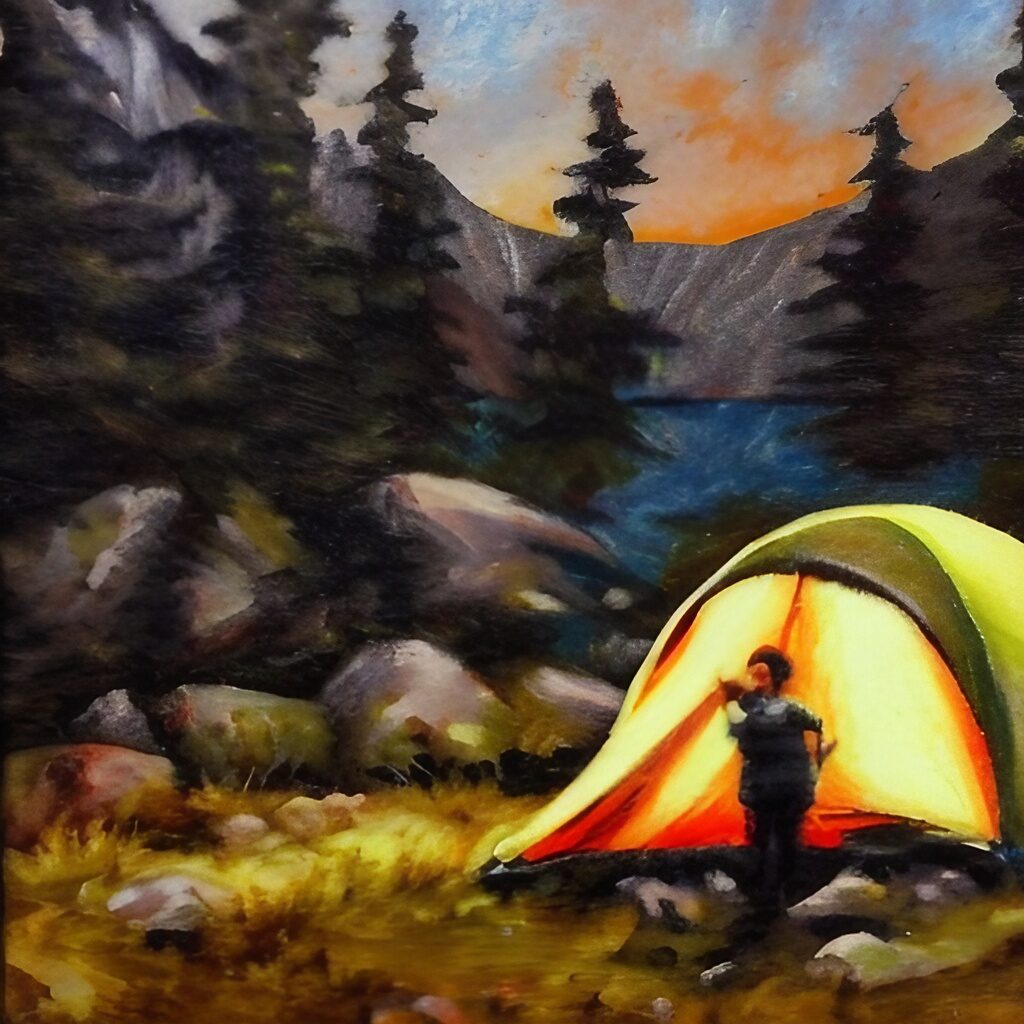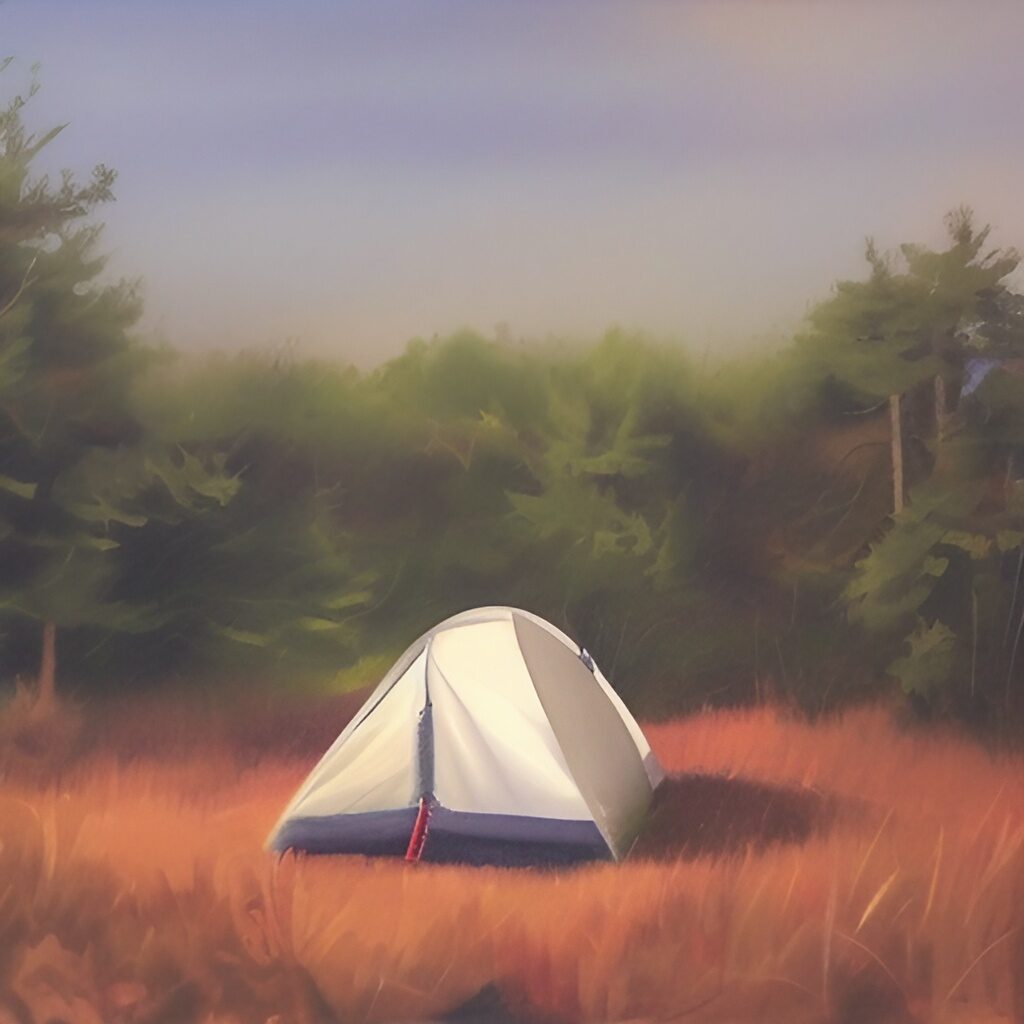
Using a bivy or tarp is common when getting close to nature, but using them together adds pack weight that you may not like.
Using a bivy with a tarp is wise as it adds an extra layer of protection in the case of weather changes and bug-infested areas. However, using one or the other works well too.
I’ve done some research on the topic, so let’s quickly go over the benefits and drawbacks.
- The Pros of Using a Bivy with A Tarp – Do You Need to Use a Bivy with a Tarp?
- The Cons of Camping with a Bivy and a Tarp – Do You Need to Use a Bivy with a Tarp?
- Added Weight – The Cons of Camping with a Bivy and a Tarp
- Condensation – The Cons of Camping with a Bivy and a Tarp
- Can Be Too Hot – The Cons of Camping with a Bivy and a Tarp
- Constraining – The Cons of Camping with a Bivy and a Tarp
- You’re Not As Close to Nature – The Cons of Camping with a Bivy and a Tarp
- Alternatives to a Bivy Sack – Do You Need to Use a Bivy with a Tarp?
- Do You Use a Groundsheet With Your Bivy? – Do You Need to Use a Bivy with a Tarp?
- Conclusion – Do You Need to Use a Bivy with a Tarp?
- Frequently Asked Questions – Do You Need to Use a Bivy with a Tarp?
The Pros of Using a Bivy with A Tarp – Do You Need to Use a Bivy with a Tarp?
Bivys add plenty of benefits to your camping trip. There are a few positives about them that may entice you to use this combo.
Bug Protection – The Pros of Using a Bivy with A Tarp
Sleeping in a bivy keeps bugs at bay. You can use a bug net when sleeping with just a tarp, but they’re not 100% effective. Sleeping inside a sealed bivy will keep the bugs away from you.
I recommend having some form of bug protection even if it’s not a bivy. Bites are painful, have unpleasant symptoms, and can get infected.
Weather Protection – The Pros of Using a Bivy with A Tarp
A tarp can shield you from light rain, but you may still get wet depending on the direction of the rainfall. Sleeping in a bivy, which is water-resistant all over, will ensure you stay fully dry all night long.
Preparedness – The Pros of Using a Bivy with A Tarp
You can track the weather forecast for days, but there’s always a chance that there’ll be a sudden change. Surprise rain showers are a very real thing.
Having a bivy with you ensures you’re ready for a sudden weather change, and sleeping in one makes sure you’re prepared in case that change comes in the middle of the night.
Safe From Dew – The Pros of Using a Bivy with A Tarp
Dew is a pest that’s difficult to get rid of, even when it’s the dry season. Sleeping in a bivy under your tarp will ensure you wake up dry even when the air and ground are moist.
Warmth – The Pros of Using a Bivy with A Tarp
You should always make sure you have access to extra warmth, even in summer, just in case. A bivy adds that extra warmth, so you’re unlikely to end up chilly.
The Cons of Camping with a Bivy and a Tarp – Do You Need to Use a Bivy with a Tarp?
The cons of using a bivy are few, but they can still influence your decision to use one. Let’s examine that.
Added Weight – The Cons of Camping with a Bivy and a Tarp
If you’re backpacking then you’re going to want as light a pack as possible. Tarps and bivys don’t weigh much, but even a pound of their combined weight can make a difference.
Condensation – The Cons of Camping with a Bivy and a Tarp
Condensation tends to build up in your bivy because you’re in a warm, enclosed space. There’ll be no condensation buildup if you sleep with just a tarp.
Can Be Too Hot – The Cons of Camping with a Bivy and a Tarp
Sometimes you’ll bring a bivy for the extra warmth but you’ll end up too hot. You may feel as though you’d have been better off going without your bivy.
Constraining – The Cons of Camping with a Bivy and a Tarp
A bivy is a tight sack that doesn’t give you much room to move around. If you’re claustrophobic at all, then this won’t be good for you.
You’re Not As Close to Nature – The Cons of Camping with a Bivy and a Tarp
Sometimes the point of sleeping without a tent and under a tarp is to stay close to nature, but you won’t be able to get as close to nature while in a bivy.
Alternatives to a Bivy Sack – Do You Need to Use a Bivy with a Tarp?
Sometimes you’ll want something instead of a bivy under your tarp, and that’s fine. The options below can be more comfortable.
Hammock – Alternatives to a Bivy Sack
If you don’t want to sleep in an enclosed bivy, then consider a hammock. You’ll be more comfortable as you’re off the ground, and you can add an underquilt or a sleeping pad for extra warmth.
Are you looking for a hammock to avoid bug bites? Be sure to check out the 10 best hammocks with mosquito netting.
Mummy Sleeping Bag – Alternatives to a Bivy Sack
A mummy sleeping bag may feel more natural than a bivy. They have more padding and don’t fully enclose you. They have hoods, but your face isn’t obscured. However, you can still burrow it down into the bag if needed.
Emergency Blanket – Alternatives to a Bivy Sack
Emergency blankets tend to be neglected and ignored when talking about outdoor activities, but they go well with a tarp and a highly insulated sleeping pad.
You have the freedom to move around in your sleep, but you’ll be warm and cozy while using one.
Do You Use a Groundsheet With Your Bivy? – Do You Need to Use a Bivy with a Tarp?
A groundsheet is a good idea, but it’s not necessary, especially while using a sleeping pad. A groundsheet will add bulk to your pack. It’s a good idea to bring one if you’re sleeping somewhere with very wet ground. Otherwise, you can go without it.
I don’t recommend bringing a groundsheet, as your pack space is better used for bringing extra water, clothes, or an emergency blanket if needed.
Speaking of which, I recommend reading all about using an emergency blanket vs bivy next, as it may be of help to you while camping with very little gear.
Conclusion – Do You Need to Use a Bivy with a Tarp?

While a bivy or tarp may be useful when camping out in the wild, you may not like your pack’s extra weight if you also bring one.
The combination of a bivy and tarp is a smart choice because it provides additional shelter in bad weather or insect infestation. While both are useful, you can get good results with just one.
Using a bivy sack will shield you from insects, bad weather, cold, and dew. Nonetheless, this entails a greater burden, condensation, heat, and suffocation than usual. It also suggests that you are not in the same physical vicinity as the natural world.
Weighing the benefits and drawbacks, the final call is yours to make. Identify the things that will have the greatest impact on your upcoming trip.
Frequently Asked Questions – Do You Need to Use a Bivy with a Tarp?
How Do I Pack in a Compact Way with a Bivy? – FAQs
Although compressing a bivy sack can be challenging, it can be done with the right strategies.
Some things to remember are listed below:
- Try packing as little as possible by using compression sacks or dry bags to keep items dry and save on space.
- Clothing, sleeping bags, and tarps can be rolled up into compact cylinders and safely stored in a backpack.
- For shorter trips, it’s preferable not to bring along cumbersome items like stoves and cookware.
- Use lighter alternatives like pocket stoves or titanium cookware to avoid having to leave anything behind.
- If you’ll be traveling a long distance, it’s advisable to carry a number of smaller bags rather than one large backpack.
- Organize your gear so that the things you’ll need most (like a first-aid kit) are within easy reach.
- In case you’re not sure how much stuff to bring, bring less! When using a bivy bag for overnight hiking, less is more in terms of both comfort and convenience.
Knowing what you’re doing and being well-prepared, you can pack a bivy in a way that leaves you with plenty of room for all the gear you’ll need for a successful wilderness trip.
How Do You Choose a Good Tarp for Camping? – FAQs
If you want to have a good time camping, you need to make sure you get the right tarp.
When picking out a sturdy tarp, keep these things in mind:
- Tarps come in a variety of sizes and shapes, so pick one that works for your needs. Coverage should be adequate but not excessive, as this will only serve to add extra weight and bulk.
- Think about whether or not water resistance is essential; if you expect rain, choose a tarp made of nylon or polyester treated to repel water.
- Check for reinforcements around the edges and corners and quality stitching to help protect against the elements and wear and tear.
- Look for tarps with grommets and reinforced tie-outs that are made to be connected together; this will provide better stability when using multiple tarps in a shelter system.
- It’s important to keep in mind that lighter is not always better. If you skimp on strength or quality to keep the weight down, you could end up stranded in bad weather.
- Last but not least, grab some stakes or sandbags to keep your tarp from blowing away. Despite being sold independently, these components are crucial to a secure installation on any surface.














